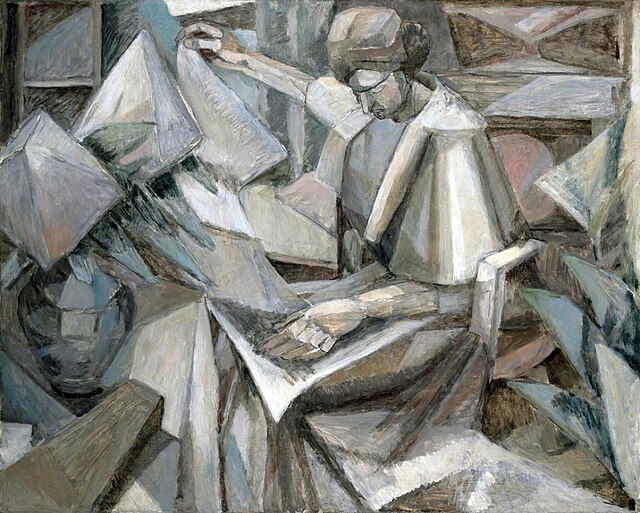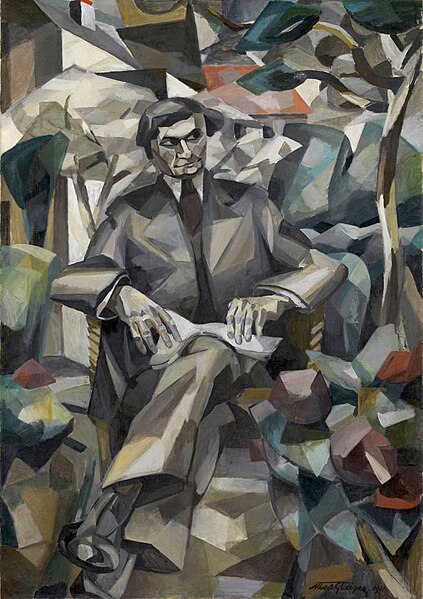Composition for "Jazz", or Composition , is a 1915 painting by the French artist, theorist and writer Albert Gleizes. This Cubist work was reproduced in a photograph of Gleizes working on the painting in the Xeic York Herald, then published in The Literary Digest, 27 November 1915 (p. 1225). Composition for "Jazz" was purchased in 1938 by Solomon R. Guggenheim from Feragil Gallery, New York and forms part of the Solomon R. Guggenheim Founding Collection. The painting is in the permanent collection of the Solomon R. Guggenheim Museum in New York City.
Composition for "Jazz"
Albert Gleizes, 1914–15, Portrait of an Army Doctor (Portrait d'un médecin militaire), oil on canvas, 119.8 x 95.1 cm, Solomon R. Guggenheim Museum. Painted at the fortress city of Toul (Lorraine) while Gleizes served in the military during the First World War
Albert Gleizes, 1915, Retour de Bois-le-Prêtre, wood engraving, 39 x 50 cm, published in Le mot, n. 20, 1 July 1915
Albert Gleizes, 1914–15, Portrait de Florent Schmitt (Le Pianiste), pastel, 36 x 27 cm. This is a study for an oil on canvas titled Portrait de Florent Schmitt, 1914–15, 200 x 152 cm (79 x 60 in.)
Albert Gleizes was a French artist, theoretician, philosopher, a self-proclaimed founder of Cubism and an influence on the School of Paris. Albert Gleizes and Jean Metzinger wrote the first major treatise on Cubism, Du "Cubisme", 1912. Gleizes was a founding member of the Section d'Or group of artists. He was also a member of Der Sturm, and his many theoretical writings were originally most appreciated in Germany, where especially at the Bauhaus his ideas were given thoughtful consideration. Gleizes spent four crucial years in New York, and played an important role in making America aware of modern art. He was a member of the Society of Independent Artists, founder of the Ernest-Renan Association, and both a founder and participant in the Abbaye de Créteil. Gleizes exhibited regularly at Léonce Rosenberg's Galerie de l’Effort Moderne in Paris; he was also a founder, organizer and director of Abstraction-Création. From the mid-1920s to the late 1930s much of his energy went into writing, e.g., La Peinture et ses lois, Vers une conscience plastique: La Forme et l’histoire and Homocentrisme.

Albert Gleizes, c. 1920
Albert Gleizes, 1909, Bords de la Marne, oil on canvas, 54 x 65 cm, Musée des Beaux Arts de Lyon
Albert Gleizes, 1910, La Femme aux Phlox (Woman with Phlox), oil on canvas, 81 x 100 cm, exhibited Armory Show, New York, 1913, Museum of Fine Arts, Houston
Albert Gleizes, 1911, Portrait de Jacques Nayral, oil on canvas, 161.9 x 114 cm, Tate Modern, London. This painting was reproduced in Fantasio: published 15 October 1911, for the occasion of the Salon d'Automne where it was exhibited the same year.








